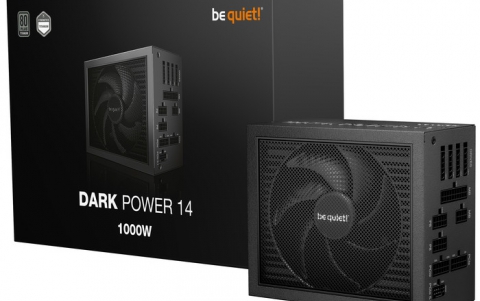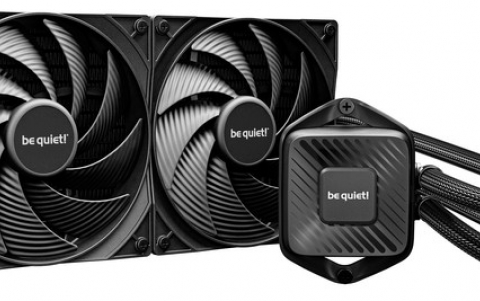VoIP Essentials
5. The Good, Old, Software
Review Pages
2. The Codecs
3. Common Problems Found With VoIP
4. The Key To Success
5. The Good, Old, Software
VoIP TOOLS AND DRAWBACKS
We have the computer, we are provided with a connection to the Net; what is left is the VoIP to be made use of. Right at this time, the VoIP market is being dominated by the Skype. Over 30% of the calls made all over the world, are being carried out by the Skype! Other than the Skype there is a “coalition” of providers based on the SIP protocol. The Skype is in itself a restricted protocol and does not allow communication with other networks’ SIP users. On the other hand, generally speaking, the SIP service subscribers are able-either the easy or the hard way-to communicate with each other.
 Unfortunately, a lack of common numbering and interconnection among VoIP
providers, make up what is called the Achille’s heel of the system in
general. Although communication from VoIP networks to fixed networks around
the world is now being carried out at characteristically easy and cheap levels,
reverse communication has just started making its first steps. An organized
attempt to integrate these two worlds is on the way [ENUM]. A specialized DNS
servers network will allow easy location of subscribers in both sides of voice
communication networks.
Unfortunately, a lack of common numbering and interconnection among VoIP
providers, make up what is called the Achille’s heel of the system in
general. Although communication from VoIP networks to fixed networks around
the world is now being carried out at characteristically easy and cheap levels,
reverse communication has just started making its first steps. An organized
attempt to integrate these two worlds is on the way [ENUM]. A specialized DNS
servers network will allow easy location of subscribers in both sides of voice
communication networks.
THE GOOD, OLD SOFTWARE
The bulk of the VoIP communications provided today are carried out by an application of some kind [Softphone]. On the one side we have Internet telephony applications, which have developed to telecommunication providers [ie the Skype Out service provided by the Skype], whereas on the other side there are VoIP telecommunication providers offering applications that suit them best, ie the X-Lite. Among the various VoIP groups, there are the specialized messengers [MSN, ICQ], offering voice communication in addition to the written one.
Normally, each application supports its own communication protocol along with the rest of the widely spread VoIP protocols. For instance, the X-Lite is based on SIP, while the JaJah application is based on a restrictive protocol/codec, supporting though, at the same time SIP, H.323, Skype, IAX2 calls-in all the widely spread codecs, to be more specific. Likewise, similar services are being provided by the Firefly application supported by the FreshTel, based on the IAX protocol while it supports SIP as well.
As you may have well understood, voice communication through a kind of a Softphone it is required that an activated computer as well as a microphone and headphones be used.
To make our communications more functional, the producers of each application/service propose specific telephone devices, capable of being connected to a PC either through a USB or an Ethernet port. These appliances can be purchased either in every VoIP provider website or in local markets where a variety of models can be found.
Before setting your self to the purchase of such a device, you will have to check out with the provider you are about to connect that the aforesaid device is compatible with the services provided. Several major VoIP services/applications will be presented bellow.
![]() MSN Messenger (Messenger.msn.com) The improved Windows Messenger Edition
is considered as one of the best applications in the Internet voice communication
era. Its use is really simple and as a
result its application is accessible even to a beginner, while its performance
is really
effective. The procedure the user is required to follow is simple: A communication
window with the called user opens and a click on the icon displaying a microphone
is requested. If there is no technical trouble of any sort, voice communication
is carried out both ways [full duplex]. While conversation is on, the user
is able to silence the microphone in the software itself, without having to
intervene
with the Windows volume mixer/control. The philosophy of a simple software
run expands to the ways it can be utilized with problematic connections. In
case
of lack in speed, the quality of voice communication drops automatically, so
that the bandwidth requirements of the connection are reduced. The user is
capable of no obvious selection in such a shift. Should a problem related to
a successful
connection arises, a user is simply informed that their connection is just
an unsuccessful one, without being informed on the measures they have to take
to
solve the problem.
MSN Messenger (Messenger.msn.com) The improved Windows Messenger Edition
is considered as one of the best applications in the Internet voice communication
era. Its use is really simple and as a
result its application is accessible even to a beginner, while its performance
is really
effective. The procedure the user is required to follow is simple: A communication
window with the called user opens and a click on the icon displaying a microphone
is requested. If there is no technical trouble of any sort, voice communication
is carried out both ways [full duplex]. While conversation is on, the user
is able to silence the microphone in the software itself, without having to
intervene
with the Windows volume mixer/control. The philosophy of a simple software
run expands to the ways it can be utilized with problematic connections. In
case
of lack in speed, the quality of voice communication drops automatically, so
that the bandwidth requirements of the connection are reduced. The user is
capable of no obvious selection in such a shift. Should a problem related to
a successful
connection arises, a user is simply informed that their connection is just
an unsuccessful one, without being informed on the measures they have to take
to
solve the problem.
![]() ICQ (www.icq.com) It has been some years since they have been offering voice
communication, but they insist on making life hard to the user. To start with,
the desired ability
is not available with the application right after initial installment. Both
the users wishing to join in a voice communication have to download an under-sized
element to be added to the application [from the www.icq.com website for the
2003b version]. As soon as the aforesaid addition is installed an icon displaying
an acoustic telephone appears next to the name and the list of connection introduced
by each user. Voice communication develops in a separate window. In general
terms,
voice quality is not as high as the one provided by the MSN Messenger, yet
ICQ seems capable of effectively carrying out connections amongst users, which
are
cause for other direct communication applications to give up.
ICQ (www.icq.com) It has been some years since they have been offering voice
communication, but they insist on making life hard to the user. To start with,
the desired ability
is not available with the application right after initial installment. Both
the users wishing to join in a voice communication have to download an under-sized
element to be added to the application [from the www.icq.com website for the
2003b version]. As soon as the aforesaid addition is installed an icon displaying
an acoustic telephone appears next to the name and the list of connection introduced
by each user. Voice communication develops in a separate window. In general
terms,
voice quality is not as high as the one provided by the MSN Messenger, yet
ICQ seems capable of effectively carrying out connections amongst users, which
are
cause for other direct communication applications to give up.
![]() Skype (www.skype.com)
Despite of having recently made its appearance in the VoIP era, it has developed
into the dominating force in it, having obtained a share amounting over 30%!
From the beginning it developed as a high quality and minimum requirements
with regard to the connection speed voice application. As an application it
is just
a simple program. It provides voice and-for the last few months-written communication,
thus poking its way in the Messenger’s field. It supports a list of contacts,
which has started being stored in the company servers, so that the service is
available to any users being facilitated by third parties’ computers.
Voice communication is achieved via double-clicking on the user name required
to communicate
with while it is completed with pressing the button relative to the red icon.
Skype (www.skype.com)
Despite of having recently made its appearance in the VoIP era, it has developed
into the dominating force in it, having obtained a share amounting over 30%!
From the beginning it developed as a high quality and minimum requirements
with regard to the connection speed voice application. As an application it
is just
a simple program. It provides voice and-for the last few months-written communication,
thus poking its way in the Messenger’s field. It supports a list of contacts,
which has started being stored in the company servers, so that the service is
available to any users being facilitated by third parties’ computers.
Voice communication is achieved via double-clicking on the user name required
to communicate
with while it is completed with pressing the button relative to the red icon.
Performance is what amazes anyone with this application. The sound is really clear and time delay is practically non-existent. The application has a minimum of requirements as far as bandwidth is concerned, which, if not met, may cause some problems. For example, with a 56K connection, if the line gets loaded, the sound will come up with cut offs and discontinuity. Finally, it has to be noted that the program seems to have particularly high requirements as far as processing power is concerned, when compared to other applications in the field. The Skype provides connection to fixed as well as mobile networks all over the world at low costs, while a service through which a specific number for incoming calls from any fixed or mobile network is set, has made its appearance. The service is called Skypeln and as for now it is available in the United States, the United Kingdom, Sweden, France, Finland, Denmark and Poland.
![]() FWD (www.freeworlddialup.com)
Free World Dialup started-and still works-as the undertaking of VoIP users
to facilitate free of charge voice calls and has met with great appeal. As
we have
already mentioned, to enable a voice call under a SIP protocol the intervention
of a server-central service- is required, which undertakes the task of connecting
the users who are involved. While the communication in question is to be directly
carried out by the users, the server will take on to intervene to the facilitation
of the commencement of such communication. Most servers of the kind are provided
as part of a payable provider. Free World Dialup is the most widely known charge-free
VoIP provider. Up until recently it used to offer a pre-adjusted X-Lite version,
but in the last few months it has been proposing the pulver.communicator [yes,
there is a dot in-between], which provides cooperation with the Skype network-on
condition that it is installed in the same computer.
FWD (www.freeworlddialup.com)
Free World Dialup started-and still works-as the undertaking of VoIP users
to facilitate free of charge voice calls and has met with great appeal. As
we have
already mentioned, to enable a voice call under a SIP protocol the intervention
of a server-central service- is required, which undertakes the task of connecting
the users who are involved. While the communication in question is to be directly
carried out by the users, the server will take on to intervene to the facilitation
of the commencement of such communication. Most servers of the kind are provided
as part of a payable provider. Free World Dialup is the most widely known charge-free
VoIP provider. Up until recently it used to offer a pre-adjusted X-Lite version,
but in the last few months it has been proposing the pulver.communicator [yes,
there is a dot in-between], which provides cooperation with the Skype network-on
condition that it is installed in the same computer.
Another challenging service provided by the FWD is the ability catered to the user to be registered in a telephone network of the United Kingdom, free of charge. What follows is that the user may have at his disposal a telephone call number under the British international Code. In other words, one might call the aforesaid number assuming that the user the number belongs to is connected to the FWD server, while the call will appear as a SIP in the application running in their computer. Of course, it should be stated right at this point, that dialing the above phone number will cost more than calling any “ordinary” number in the same country and the caller will have to be charged more, yet on the other hand the FWD user does not have to pay a penny.
VoIP charges
Now, we will move on to a comparison, indicative of the VoIP service charges. Starting off, we would like to make clear that any communication between two parties carried out in the Internet is free of charge. For instance, communication between a Skype subscriber A with a Skype subscriber B is not charged, while communication between two network subscribers, ie VoIP SIP, under Free World Dialup, is usually availed at no cost, as long as such connection is provided.
When the connection ends up in a fixed network though, ie any public or mobile network around the world, it is charged. Value added tax services, like, for example, the ability to facilitate incoming calls from fixed networks are normally provided at a cost. VoIP providers offer charge packets at a flat rate charge and some “free” moments of conversation and of course the typical charge depending on use.
Review Pages
2. The Codecs
3. Common Problems Found With VoIP
4. The Key To Success
5. The Good, Old, Software













